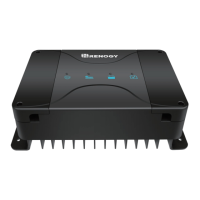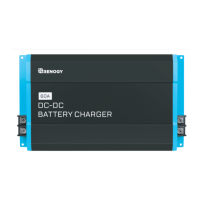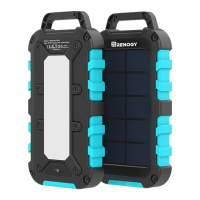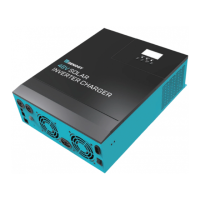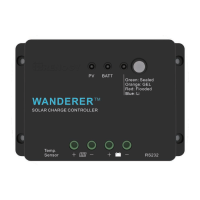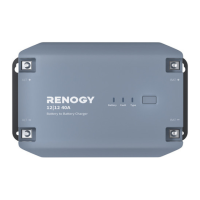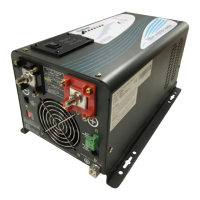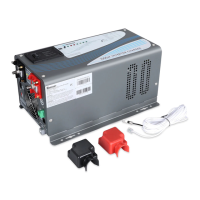The Renogy Dual Input DC-DC On Board Battery Charger with MPPT is a versatile device designed to efficiently charge your service battery from two distinct power sources: solar panels and the vehicle's alternator. This charger is engineered to ensure your service battery reaches a full 100% charge, allowing for extended off-grid enjoyment. Its multi-battery compatibility, including support for Lithium batteries, makes it a flexible solution for various setups.
Function Description:
The core function of this device is to manage and optimize the charging of a service battery using both solar and alternator power. It integrates Maximum Power Point Tracking (MPPT) technology to maximize the energy harvested from solar panels, ensuring that you get the most out of your solar array regardless of weather conditions. The MPPT algorithm is fully automatic and requires no user adjustment, continuously tracking the array's maximum power point voltage (Vmp) to ensure optimal power harvesting throughout the day.
For alternator charging, the device is compatible with both standard/traditional alternators (which provide a fixed output voltage) and smart alternators (which have a variable output voltage based on operating conditions). This adaptability ensures efficient charging from your vehicle's electrical system. The charger employs a 3-phase charging profile—Bulk, Boost, and Float—to accurately charge your service battery to its full capacity at the correct voltage levels. Additionally, it includes an Equalization stage for certain battery types, performed periodically to stir the electrolyte, balance cell voltages, and complete chemical reactions, thereby extending battery life.
A notable feature is its ability to trickle charge the starting battery via solar panels once the service battery is fully charged. This ensures that your starting battery remains topped up, preventing unexpected power issues. The device also provides isolation between the starting battery and the service battery, preventing discharge of one by the other.
Usage Features:
The charger is designed for ease of use and adaptability. It supports multiple battery types, including Sealed, AGM, GEL, Flooded, and Lithium, making it suitable for a wide range of applications. The battery type can be easily selected using a push button on the device, with an LED indicator showing the currently selected type. For advanced users, a "User mode" is available via an app or monitoring screen for future development, offering more customized control.
For smart alternators, an Ignition Signal Input port is provided to trigger the battery charger, ensuring it operates in sync with the vehicle's ignition. If using a traditional alternator, this IGN wire connection is not necessary.
The device incorporates a Battery Temperature Sensor (BTS) to measure temperature at the battery, allowing for accurate temperature compensation and charge voltage adjustment, which is crucial for prolonging battery life and improving system performance. However, it's important to note that temperature compensation is not applied when charging Lithium batteries. An optional Battery Voltage Sensor (RVSCC) port is also available for more accurate battery voltage measurement, especially in setups with long cable runs where voltage discrepancies might occur. This sensor helps the controller adjust charging stages more precisely, further extending battery life.
LED indicators provide clear status updates for solar charging, service battery status, alternator/charging activity, and battery type, allowing users to quickly monitor the system's operation. For instance, the solar charging indicator shows stages like Bulk, Boost, Float, and Equalizing charge, while the service battery indicator displays states like "Battery Full," "Battery voltage normal," or warnings for undervoltage/over-discharged/overvoltage/overtemperature.
Maintenance Features:
The Renogy DC-DC charger is built with smart protection features to ensure safe and reliable operation. These include battery isolation, over-voltage protection, battery temperature protection, over-current protection, overheat protection, reverse current protection, and reverse polarity protection for both solar panels and the alternator. These safeguards help prevent damage to the charger, batteries, and the overall system.
The device is compact and features a sturdy design, built to withstand various conditions. For installation, it can be mounted horizontally or vertically in a dry, well-ventilated location, protected from moisture, flammable materials, and excessive dust. A minimum clearance of 5cm around the charger is recommended to ensure adequate airflow and prevent overheating.
Troubleshooting guidance is provided in the manual to address common issues. For example, if the solar charging indicator is off, users are advised to check for shading, verify solar panel voltage with a multi-meter, and inspect electrical connections. For service battery issues, recommendations include turning off loads, verifying battery voltage, ensuring proper ventilation, and checking fuses and cable connections. If the alternator indicator is off, users should ensure the engine is running, verify alternator input voltage, and check the IGN signal wire connection if using a smart alternator.
The manual also emphasizes important safety instructions, such as disconnecting the product from the battery before cleaning or maintenance, avoiding water ingress, and ensuring all connections are tight. Repairs should only be performed by qualified personnel to prevent serious hazards. The device is designed for use with rechargeable batteries and requires sufficient cable cross-sections and proper fuse protection. It's also crucial to prevent metal parts from falling on the battery to avoid short circuits and sparks.
Overall, the Renogy Dual Input DC-DC On Board Battery Charger with MPPT is a robust and intelligent charging solution that prioritizes efficiency, safety, and battery longevity through its advanced features and protective mechanisms.
